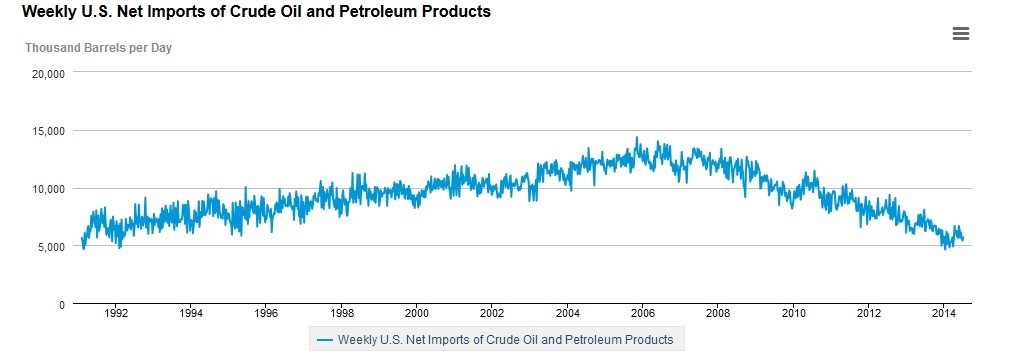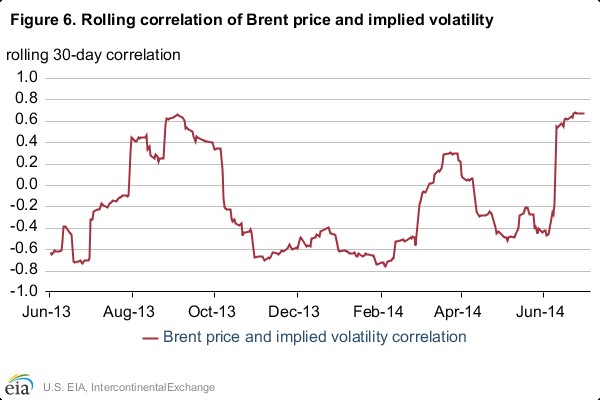By Wednesday, 9 July 2014, Oil prices across the US continued to slide, following data revealing an increase in supply. Typically, the summer season is met with a sharp uptick in consumption of gasoline in the US, but this time around it was tempered by increased supply from Libyan oil fields.
Following the release of the data, light sweet crude oil for delivery in August dropped to as low as $102.40 per barrel. The contract was 0.7% lower – $102.69 per barrel – on the NYME (New York Mercantile Exchange). The international benchmark for oil – the Brent Crude oil contract – was $0.40 lower at $108.54 per barrel. Both the WTI and Brent Crude oil have now extended their losing streaks, and the Nymex is on track for a ninth losing session.
The reports coming in that oil production in Libya will soon be boosted, following news that 2 crude oil export terminals were on track to resuming their shipments. These include the second largest oilfield in the western half of Libya – El Sharara. What this means for the market is an increase in production to the tune of 800,000 barrels per day in the short to medium term. The much anticipated EIA data for the week ending July 4, 2014 was widely expected to reveal declines of 1 million barrels in gasoline stocks and 3 million barrels in crude oil stocks. The fact of the matter is that oil has been falling, as a consequence of fears in Iraq slowly abating. These relate to supply disruptions, not the unrest which has had little effect on oil supply to date. The demand for oil is heavily reliant on the 3 biggest consumers of oil – the USA, China and Japan.
Data from the US Energy Information Administration:
The figures for July 4, 2014 have been released by the EIA, and include the following in 1000s of barrels per day:
- US domestic crude oil production at 8,514
- US crude oil inputs at 16,252
- US motor gasoline blending components at 1,280
- US finished motor gasoline at 9,425
- Total crude oil and petroleum products at 1,814,081
- Days of supply of crude oil at 24.1
- Days of supply of gasoline at 23.7
- Total imports of crude oil 7,285
- Total crude oil exports 273
- Total product exports at 3,119
- Total crude oil net imports at 7,012
- Total products net imports at -1316
The graph below reflects the net imports of petroleum products and crude oil since 1989:

Understanding the Dynamics of the Crude Oil Market
Brent crude oil prices spiked above $115 per barrel in mid-June 2014, owing to escalating tensions in Iraq. Since the WTI crude oil closely mirrors the performance of Brent crude, it too rose over $107 per barrel at that time. Banc De Binary analysts are quick to point out however that since June 19 the prices have come down sharply, owing to the realisation that the conflict in Iraq is located far away from the country’s oil fields to the south. Investors are naturally concerned that the conflict may spread to regions where oil production is concentrated, thereby disrupting future supply and impacting heavily on the price of this commodity. Since surplus production volumes are low and the potential for supply shortages is high, any change in production capacity will naturally impact heavily on the price of crude oil.
In June of 2014 Brent crude oil futures posted it secure-long high vis-a-vis backwardation. The Brent crude oil first to 13th month spread at posted a $7.42 per barrel number by 13 June, and by 4 third of July if it crept significantly lower to $4.18. By the same token, the 1st to 13th month spread in West Texas Intermediate (WTI) oil futures followed a similar pattern during the month of June. They hit a high of $11.84 per barrel on 13 June, and settled under $8 dollars per barrel by 3 July. Crude oil inventories declined during June, averaging approximately 223K barrels p/week for the 4 weeks that ended on 27 June, 2014. It's important to point out that the crude oil implied volatility for the 30 day period ending on 3 July, was 0.67. As the positive correlation between implied volatility and the daily percentage change in the Brent futures contract increases, so the recent drop in prices may reflect a diminished concern about future Iraqi output.
Across the US, crude oil stocks dropped by 2.4 million barrels for the week ending July 4, 2014. It was larger than the declines projected by the American Petroleum Institute and the Wall Street Journal. The inventories also include a 600,000 barrel increase of stocks in refined motor gasoline, which is surprising given the fact that the July 4 holiday weekend should have seen a huge consumption of the commodity. There have been several factors cited for the decreased demand over the Independence Day weekend, notably Hurricane Arthur making its way up the East Coast. This was certainly a contributing factor in the decreased demand for refined motor gasoline over the weekend.
Libyan Oilfield Resumes Production
The El Sharara oilfield in Libya resumed its production capacity of 340,000 barrels per day, after multiple false starts. The state-run oil industry – National Oil Company – announced that the oil fields would be able to resume production, after a force majeure clause had been invoked on the country’s 2 largest oil terminals. A deal was reached between the government and the militants to restart oil production at the El Sharara facility. Combined with the reopening of the Es Sider and Ras Lanuf oil ports on 6 July at 3 PM local time, oil production and export from Libya will bolster global supply. Militants officially ended a one-year long blockage of both Eastern export terminals in the first week of July. If Libyan production runs at max capacity, it could easily produce approximately 1 million barrels per day. As the increased demand for oil ramps up in the summer months, OPEC will likely be able to meet its quota as a result of the Libyan contribution. The oil price is expected to decline as the year progresses, provided that the situation in Iraq can be contained.
